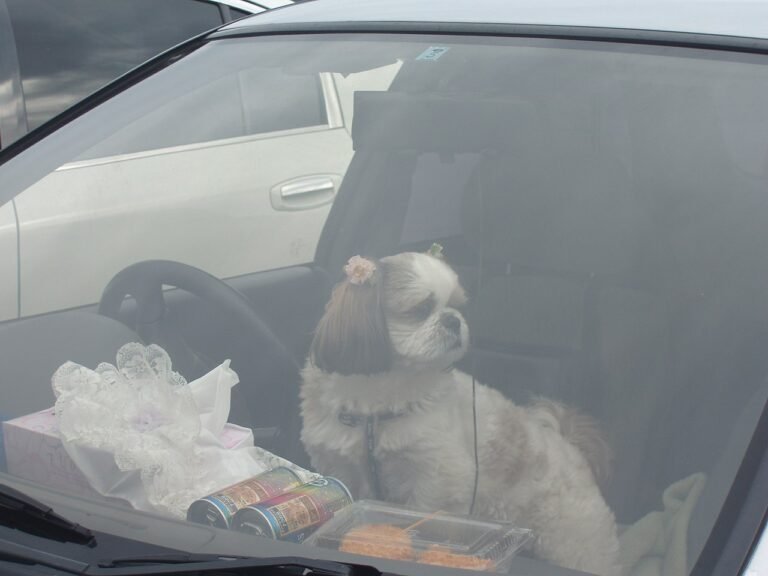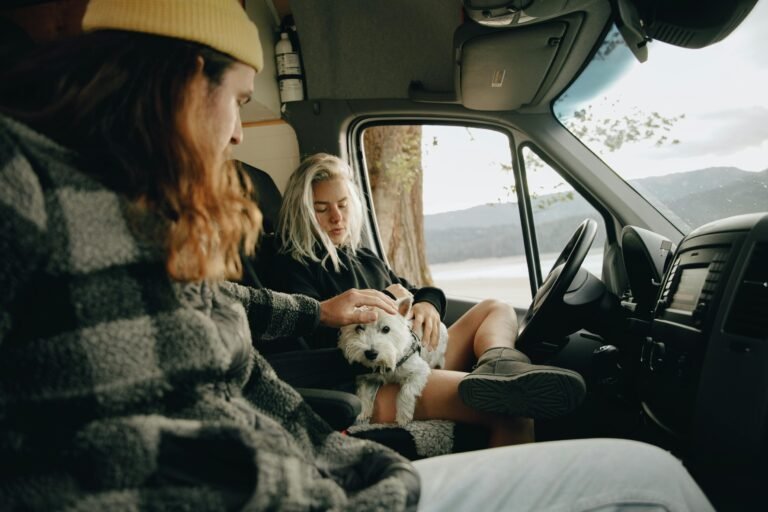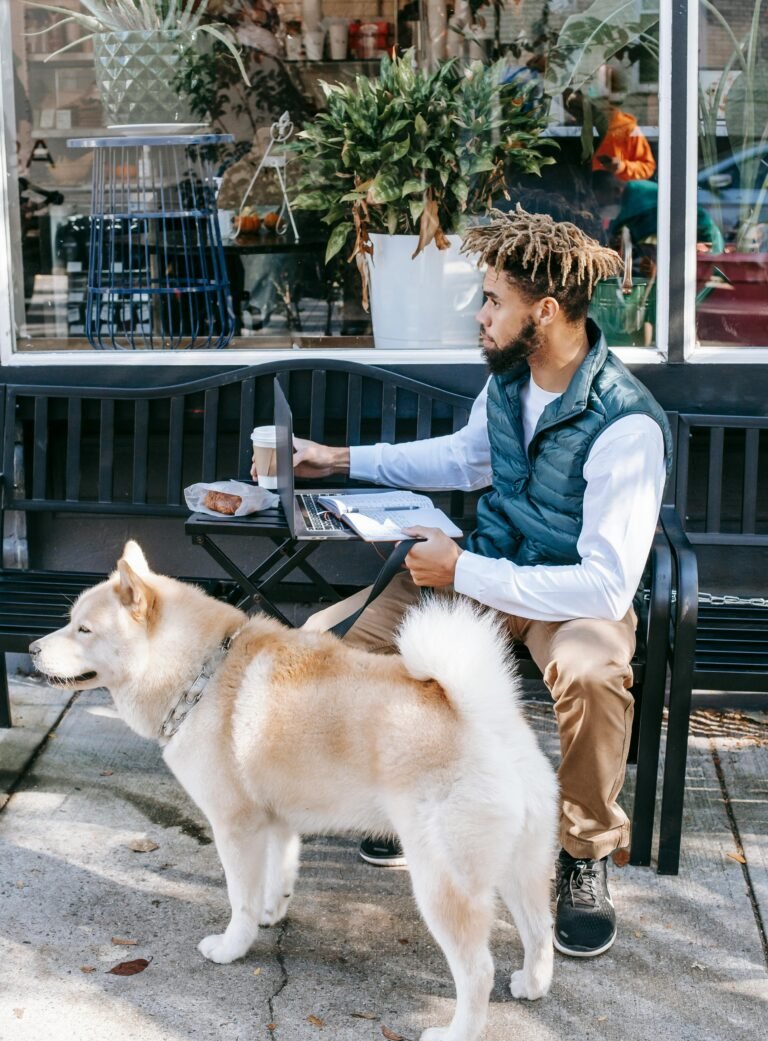There’s something magical about hitting the open road with your best friend riding shotgun. Road trips offer an opportunity to explore new places, enjoy scenic drives, and strengthen the bond with your dog. Unlike flying, traveling by car allows for flexibility—you can stop for hikes, plan detours to pet-friendly attractions, and ensure your furry companion is comfortable throughout the journey. A little planning goes a long way toward making your adventure fun and stress-free. This comprehensive guide covers everything you need to know about road-tripping with your dog, from preparing and packing to safety and etiquette.
Why Take a Road Trip with Your Dog?
Many dogs relish the idea of a car ride, and road trips can be enriching experiences for both of you. Traveling together:
- Creates quality one-on-one time away from daily distractions.
- Exposes your dog to new sights, smells, and experiences that provide mental stimulation.
- Gives you the freedom to explore pet-friendly parks, beaches, and trails that might be inaccessible by plane.
- Avoids the stress of cargo travel or separation that comes with flying.
A successful road trip is more than just hopping into the car; it requires thoughtful consideration of your dog’s needs and temperament.
Pre-Trip Planning
Before you embark on your journey, ask yourself whether your dog is ready for extended car travel. Consider their age, health, and personality. Puppies and senior dogs may tire more easily, while anxious or motion-sick dogs may need extra preparation.
- Health check: Schedule a vet appointment to ensure your dog is up to date on vaccinations and in good health. Discuss any travel concerns such as car sickness or anxiety.
- Microchip and ID: Make sure your dog’s microchip information is current and that they wear a collar with a clearly legible ID tag containing your phone number.
- Destination research: Not all destinations are equally welcoming to pets. Research dog-friendly hotels, campgrounds, national or state parks, and local attractions along your route. Look up pet policies and fees.
- Route planning: Map out the trip with regular stops every 2–3 hours for bathroom breaks and exercise. Identify rest areas, dog parks, and scenic spots where your dog can safely stretch their legs.
- Training refresh: Brush up on basic obedience commands like “sit,” “stay,” “come,” and polite leash walking. A well-behaved dog makes travel easier and safer for everyone.
Packing Essentials for Your Dog
Packing for a canine road trip goes beyond tossing a leash into the back seat. Having the right gear ensures your dog stays comfortable, secure, and entertained. Use this checklist:
- Crash-tested restraint: Whether it’s a harness attached to the seat belt, a crash-tested crate, or a booster seat for small dogs, your pet should be restrained to prevent injury in an accident.
- Food and water: Pack enough of your dog’s regular food for the entire trip plus an extra day or two. Sudden diet changes can upset their stomach. Bring jugs of water or a supply of bottled water, especially if you are unsure about water quality at rest stops.
- Collapsible bowls: Lightweight bowls make it easy to serve meals and drinks on the go.
- Bed or blanket: Familiar bedding provides comfort and helps your dog settle in unfamiliar environments.
- Leash and long line: Carry a standard leash for walks and a longer line for exploring safe, open areas.
- Waste bags and cleaning supplies: Always clean up after your pet. Hand wipes and paper towels are useful for spills and muddy paws.
- Toys and chews: Bring a variety of toys—a favorite plush for comfort, chew toys for stress relief, and puzzle toys for mental stimulation during long stretches.
- Medical records and first-aid kit: Include vaccination records, copies of prescriptions, and a basic first-aid kit with bandages, antiseptic wipes, tweezers, and any medications your dog needs.
- Car seat cover or hammock: Protect your upholstery from fur, dirt, and claws.
- Portable fan or sunshade: If traveling in hot weather, these accessories help regulate temperature in the car.
A little organization can prevent frantic searches for supplies on the road.
Car Safety and Comfort
Keeping your dog secure and comfortable is paramount. A loose dog can be a dangerous distraction and is at risk of injury during sudden stops. Follow these guidelines:
- Secure the seat or crate: Choose a crash-tested harness or crate and attach it to the seat belt or cargo anchors. Small dogs may enjoy booster seats that allow them to look out the window.
- Never let your dog ride in the front seat: Airbags can cause serious injury to dogs. The safest spot is the back seat or cargo area with proper restraints.
- Maintain a comfortable temperature: Dogs don’t sweat the way humans do, so cars can become dangerously hot or cold quickly. Use air conditioning or heating to regulate the cabin. Sunshades on the windows can help during summer.
- Provide ventilation and water: Crack a window or use the car’s ventilation system to ensure fresh air circulation. Offer water frequently, especially on warm days.
- Plan rest stops: Schedule breaks every few hours. Use this time to let your dog relieve themselves, explore new smells, and burn energy. A tired dog will relax more easily back in the car.
- Never leave your dog unattended in the car: Even on mild days, the temperature inside a vehicle can soar in minutes. If you need to go inside somewhere your dog isn’t allowed, take turns with a travel companion or opt for curbside pickup.
On-the-Road Routine
Consistency brings comfort. Try to stick to your dog’s normal feeding and exercise schedule while traveling. Feed meals at similar times each day, and avoid feeding right before driving to reduce motion sickness.
Encourage calm behavior by providing long-lasting chews or stuffed Kongs during the drive. Rotate toys to maintain interest. Keep the car environment relaxed—play soft music, speak in soothing tones, and avoid sudden loud noises.
When you stop, practice recall and basic commands in different environments to reinforce training. Always leash your dog when exiting the car; unfamiliar places may contain hazards like traffic or wildlife.
Dog-Friendly Accommodations
Finding a place to sleep isn’t as simple as pulling into any motel when you’re traveling with a dog. Do your homework:
- Hotels and motels: Many chains welcome dogs, but policies vary by location. Some impose weight limits or charge pet fees. Call ahead to confirm and request a ground-floor room near an exit for easy potty trips.
- Vacation rentals and Airbnbs: Filters on booking platforms allow you to search for pet-friendly properties. Review house rules carefully and respect them to keep options open for future travelers.
- Campgrounds: National and state parks often allow dogs in campgrounds but may restrict access to certain trails or facilities. Follow posted rules and keep your dog leashed.
- Friends and family: If you’re staying with loved ones, discuss expectations in advance. Bring a crate or gate if your host has pets or areas that are off-limits.
Always clean up after your dog and minimize noise to be a courteous guest. Bringing your dog’s crate can provide a familiar den-like space that helps them settle and prevents them from roaming or causing damage in lodging.
Managing Anxiety and Motion Sickness
Not all dogs are natural road warriors. If your pup shows signs of stress—panting, drooling, pacing, whining—or gets carsick, try these strategies:
- Gradual desensitization: Take short drives around the neighborhood, gradually increasing duration. Reward your dog with praise or treats when they remain calm.
- Comfort items: A favorite blanket or shirt with your scent can provide reassurance. Calming pheromone sprays or collars may also help.
- Natural remedies: Some owners find success with ginger treats, vet-approved herbs, or calming supplements. Always consult your veterinarian before trying new products.
- Medication: In severe cases of anxiety or motion sickness, a vet may prescribe anti-nausea or anti-anxiety medications. Never administer human medication without veterinary guidance.
- Proper seating: Facing forward and being able to see out the window can reduce nausea. Elevate small dogs safely in booster seats; for larger dogs, ensure crate openings allow a view.
With patience and practice, most dogs can learn to enjoy the ride.
Etiquette and Local Laws
Being a responsible traveler means respecting the environment and community you’re visiting. Remember to:
- Observe leash laws: Keep your dog leashed unless you’re in a designated off-leash area. This protects wildlife and other visitors.
- Pick up waste: Always carry bags and dispose of waste properly. Leaving poop behind is unsanitary and discourteous.
- Be mindful of wildlife: Many natural areas are home to sensitive ecosystems. Prevent your dog from chasing or barking at animals.
- Respect private property: Don’t allow your dog to roam on other people’s campsites, picnic areas, or yards.
Good manners ensure that more places remain open to canine travelers.
Conclusion
A road trip with your dog can be the ultimate bonding adventure, filled with shared discoveries and unforgettable moments. By planning ahead, packing thoughtfully, and putting safety first, you set the stage for a smooth, enjoyable journey. Whether you’re exploring a nearby scenic byway or traversing the country, the experiences you gather together will enrich both your lives. So buckle up, cue your favorite playlist, and enjoy the ride—tails wagging and windows down.






